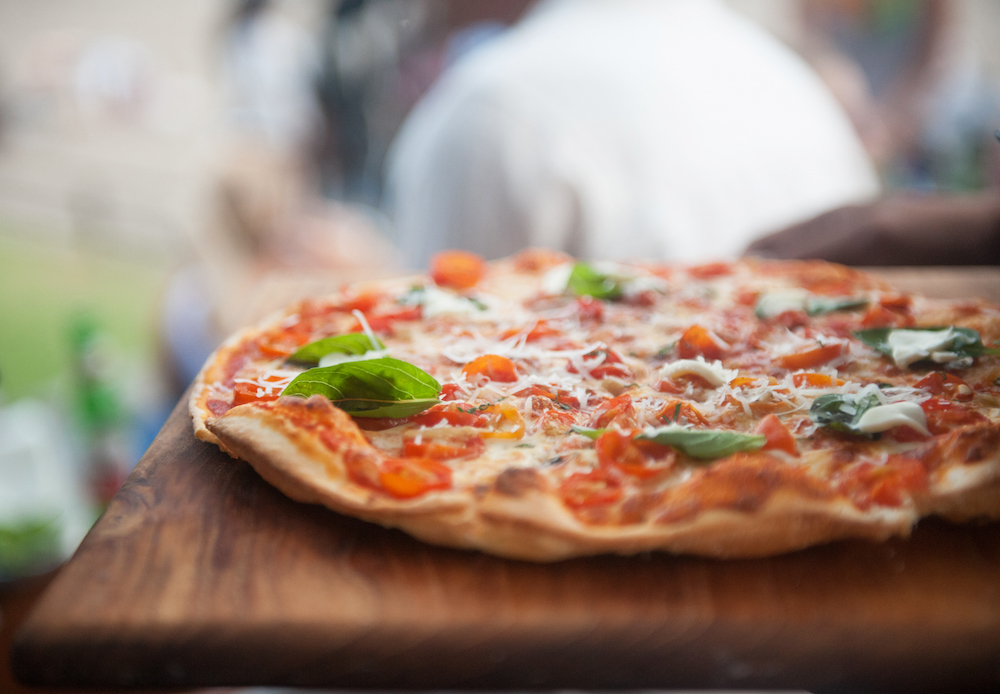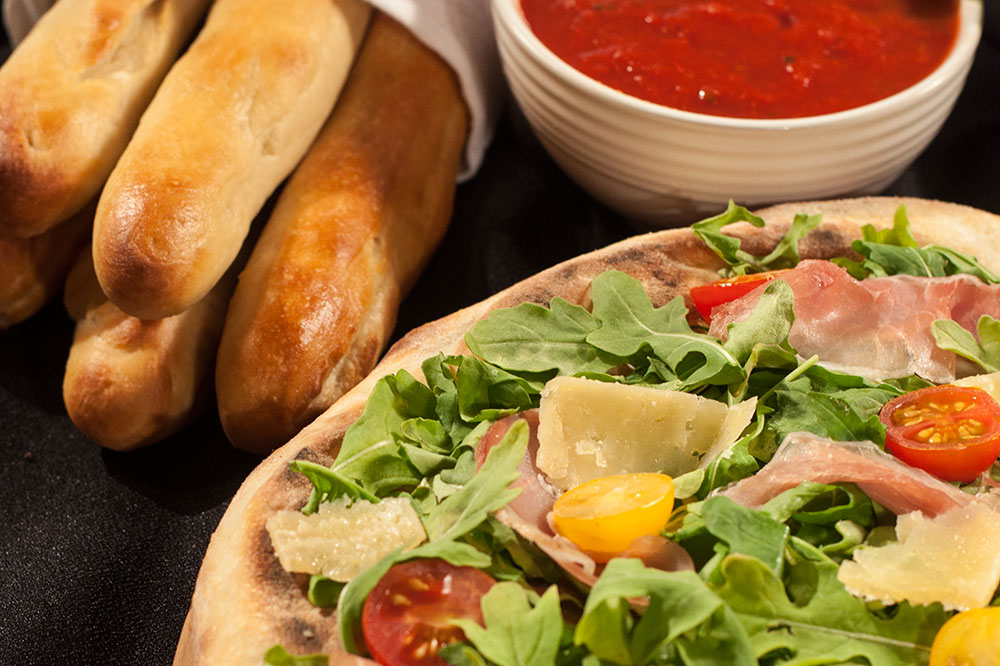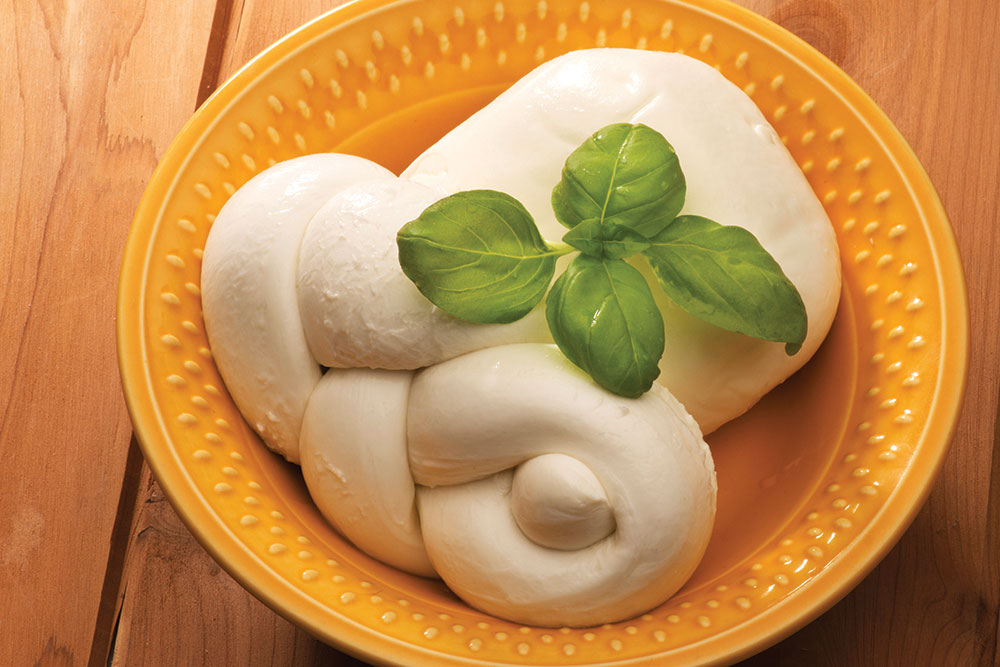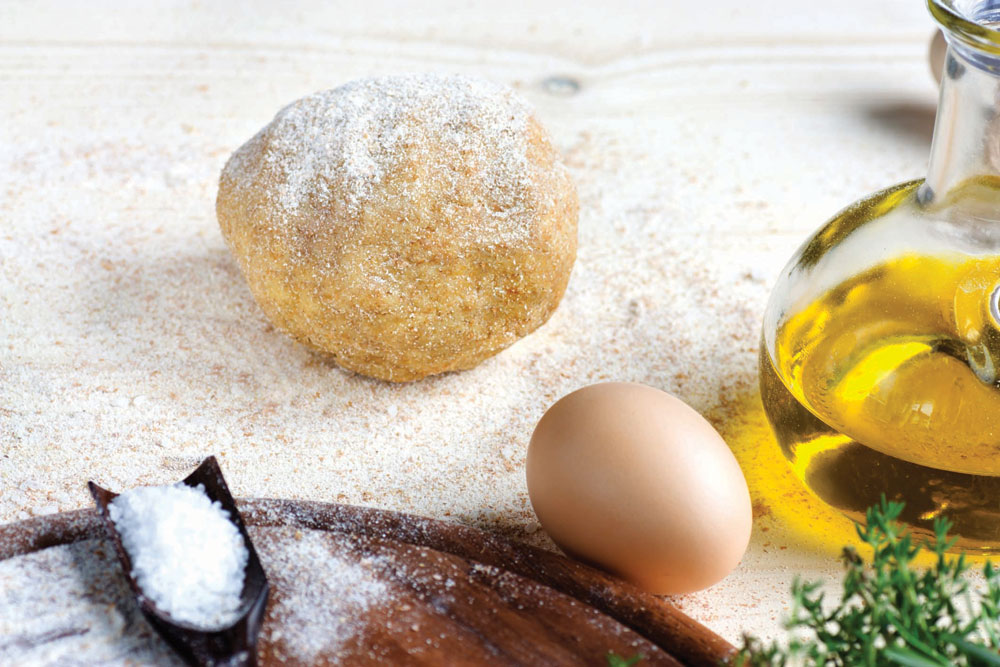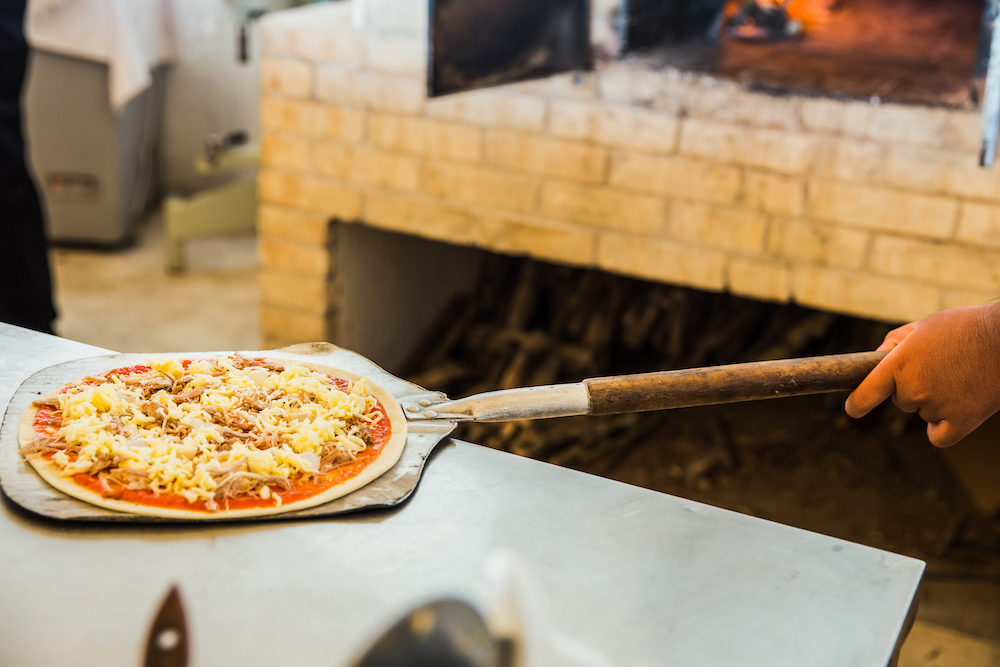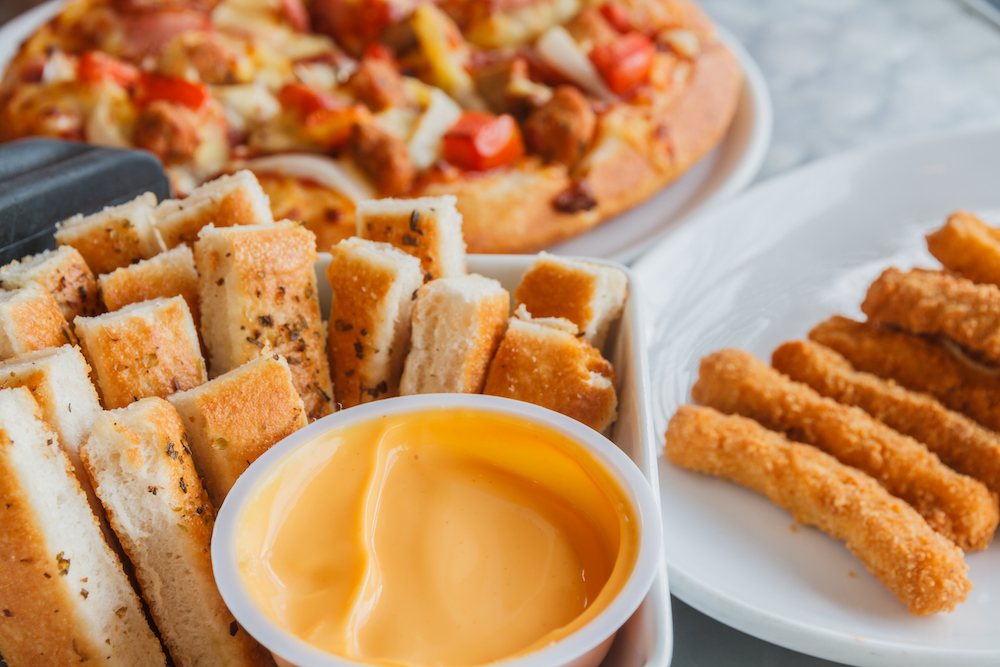Pizza is an ancient food, born of the need to find a simple way of enriching bread to make it more substantial and tastier. Pizza dough and the resulting baked crust is a member of the flatbread family. However, the most interesting aspect of pizza is its variety. The universal success of pizza is contained within a fairly simple formulation and in the many transformations that are accomplished by simply adding or replacing one or more components. The number of variations is countless, considering the different toppings, sauces and dough/crust types that can be combined together. This article will focus on variations within the base of the pizza and the wide varieties of alternative dough/crusts that can be used to produce them.
Think of the many different styles, shapes and procedures used to produce pizza crusts and associated pizza products: regional styles such as the St. Louis cracker, New York thin, Neapolitan thin, Sicilian thick, Chicago deep-dish; concepts including take-and-bake, oven rising, gluten-free; and everything else in between. Spread ingredients over the top of dough and you have a pizza; gather ingredients in the center of that dough, fold it in half and you have a calzone; or spread ingredients over the dough, roll it up and you have a stromboli. Numerous ready-made flatbreads, such as naan, flour or corn tortillas, par-baked pizza crusts and English muffins can be topped like a pizza and baked. Pocket breads such as pita can be topped and baked like a pizza, or sliced vertically so that the pocket can be opened and filled with toppings. Ciabatta, focaccia and French bread can be sliced and topped like a pizza. Bruschetta (bread that has been sliced, coated with oil and toasted) can also be used as the base crust for a pizza.
Pizza crusts can be made from a wide variety of milled and whole grains, fibers, seeds and nuts, including wheat, bulgur, spelt, durum, emmer, kamut, amaranth, barley, buckwheat, rye, corn, oats, millet, sorghum, teff, triticale, rice, quinoa (pronounced keen-wha), and assorted seeds and nut meats. They can also be made with a variety of vegetable matter—caulifl ower, zucchini and spinach, or tubers (starches) such as potatoes, cassava, taro, tapioca—and from assorted legumes such as fava beans, chickpeas, soybeans, lentils and many other varieties.
Change Is Good
Some examples of ingredient additions or substitutions:
Whole-wheat flour can be used to replace some or all of the regular flour in the formulation. If 100% of the white flour is replaced with whole-wheat flour, the resulting crust can be called “wholewheat.” If the texture or flavor is found to be undesirable at 100% replacement, try substituting only 25% (or higher) of the white flour in the formula (this could be called “wheat crust” or “made with whole-wheat flour” but should not be called “whole-wheat crust,” since only a portion of the dough is made with whole-wheat flour). Be aware that there are red and white whole-wheat flour varieties available; if the product is referred to as “whole-wheat” flour, it’s likely milled from a red wheat variety. The big difference between red and white whole-wheat flour is the flavor that it adds to the crust. A whole-wheat flour milled from a red wheat variety used at 100% in the formulation will add a bitter, “off” flavor to the crust from the tannin that is present in the whole-wheat flour (similar to tannin found in wine, coffee and tea); crust made with whole-wheat white flour has a more pleasant flavor with less bitterness due to the lower tannin content.
Multigrain blends can also be used to replace a portion of the regular flour in the formulation, and there’s no standard of identity or rules about the amount that needs to be added to the dough when it comes to calling something “multigrain.” Multigrain blends can also be added to whole-wheat dough. When using multigrain blends and whole-wheat flour in dough, some sweetness in the finished crust may be preferred and will help to enhance the flavor of the crust. Honey, molasses, or white or brown sugar can be used at 3% to 4%, based on the amount of flour that is added to the dough, but adding sweeteners to pizza dough is a matter of personal preference and isn’t necessary in order to provide food for the yeast. The more sweetener that’s added to a dough system, the more that the resulting crust will brown/color during baking. If the crust browns too quickly or excessively during baking, the toppings may not be adequately baked/heated and the crust may have an “off” or bitter flavor associated with the greater amount of browning.
Masa flour provides what is best described as a corn chip flavor and is especially well-suited for those occasions where a “Tex-Mex” crust flavor is desired. Replace 15% of the regular white flour in the batch with yellow, white or blue masa flour. Be sure to use masa flour and not cornmeal, which will not give the same flavor. However, cornmeal can also be used in dough as a partial replacement for flour; again, 15% of the total flour is a good starting point. This addition works well in thick and deep-dish crusts, like those used in Chicago-style pizzas. The cornmeal can give the crust an interesting color difference and offer a unique mouthfeel in the baked crust.
Gluten-Free and High-Fiber
In order to create a gluten-free pizza crust, tapioca (fl our/starch), sorghum, rice, potato, soybean, fava bean, garbanzo bean and other varieties of flours can be used in combination to replace wheat flour. Be aware that this will typically mix out like a batter rather than dough and needs to be parbaked in or on a solid pan. Gluten-free crusts can then be frozen for use later.
Substitute resistant starches for a portion of the regular flour in the dough formulation. This will add fiber without the undesirable taste and mouthfeel that some types of fibers can impart to the finished crust. Using an 80%-to-20% fl our-resistant starch blend will meet the U.S. NLEA requirements for a “good source of fiber” designation, and using a 67%-to-33% flour-resistant starch blend will allow a “high source of fiber” designation.
All of the alternative flours and grain blends mentioned can also be used as dusting flours on the surface of the dough when stretching, sheeting or pressing to form the base of the pizza. This will impart different flavors, textures and appearances in the finished crust.
Chemical leavening agents, such as baking powders (regular unencapsulated or special encapsulated versions), as well as combinations of baking soda (sodium bicarbonate) and various acid sources (lemon juice, vinegar, cream of tartar, sodium aluminum phosphate, sodium acid pyrophosphate, monocalcium phosphate, etc.), can be used as a sole source leavening system or in combination with yeast in a pizza dough. This dough can be used to make an ovenrising frozen pizza, or to produce a “never fail” type of take-and-bake crust.
Add-ins and Stand-ins
Crusts can also be made by adding vegetables to the dough—as either a complete or partial replacement for the flour in the formula. It will be necessary to decrease the amount of added water to the formulation in order to compensate for the extra water that the vegetables will add to the dough.
Cooked spinach can be added to pizza dough at a weight of 70% based on the amount of flour in the formulation (this would be added in addition to the flour, not as a replacement). Added water will need to be reduced to zero or very little.
Mixtures of raw egg, spices and seasonings, shredded cheese, shredded raw zucchini, cooked cauliflower (riced/shredded) or cooked spinach can be combined and spread on a greased or oiled pan and baked as usual to form a crust. Once baked, add sauce and desired toppings to the “crust” and return to the oven or broiler for a few minutes until everything is hot and the cheese is melted.
For a potato-based crust, weigh and combine twice the amount of mashed potatoes as compared to self-rising flour, add salt and butter to taste, and mix to form a soft dough. Spread the mixture onto a greased or oiled pan and bake as usual. Once baked, add sauce and desired toppings to the “crust” and return to the oven or broiler for a few minutes until everything is hot and the cheese is melted. Instant mashed potato flakes or potato flour can also be used as a 10% replacement for the regular flour in a typical pizza crust formulation. Be aware that an ingredient called “potato starch” functions completely different than potato flour or flakes in a dough system.
Finally, the crust can be replaced altogether by using cheese to glue the toppings together. Using a piece of parchment baking paper on a pan or screen, arrange desired pizza toppings (i.e., meats and vegetables) evenly over the paper. Cover the toppings with shredded or diced cheese. Bake as usual until the desired color level and doneness is achieved. Slice and serve on parchment paper.
A lot of variety can be added to a pizza just through the crust alone. So go ahead—be brave! Use some of these ideas or brainstorm some of your own and start experimenting with alternative crusts.



